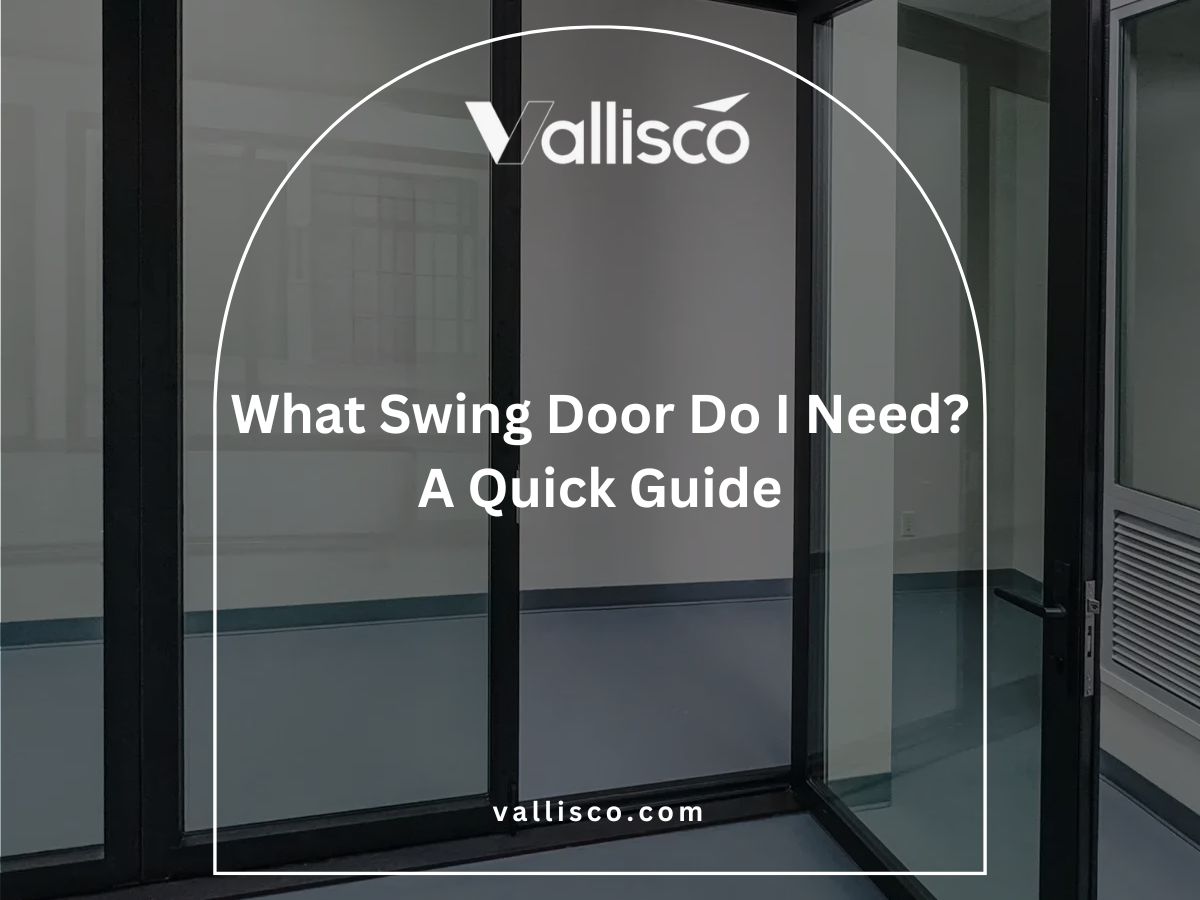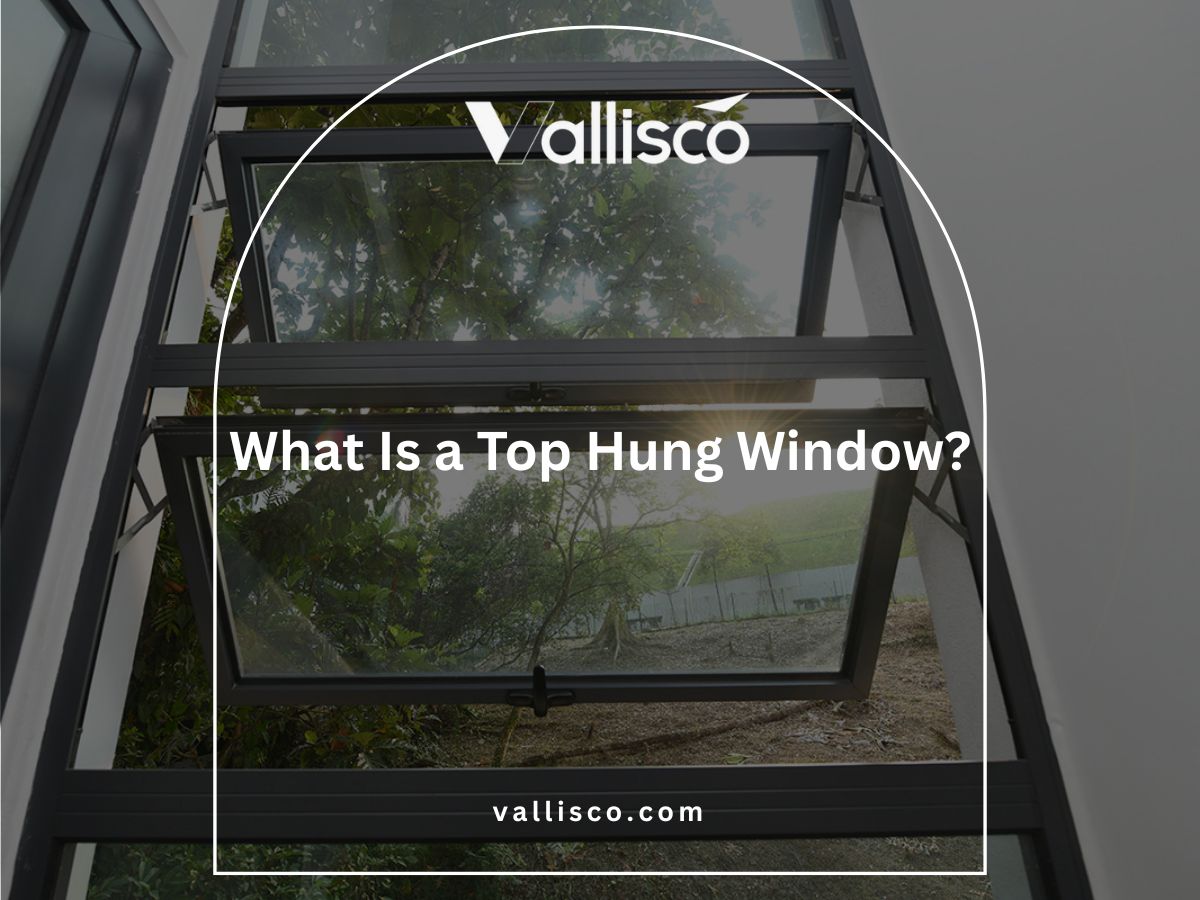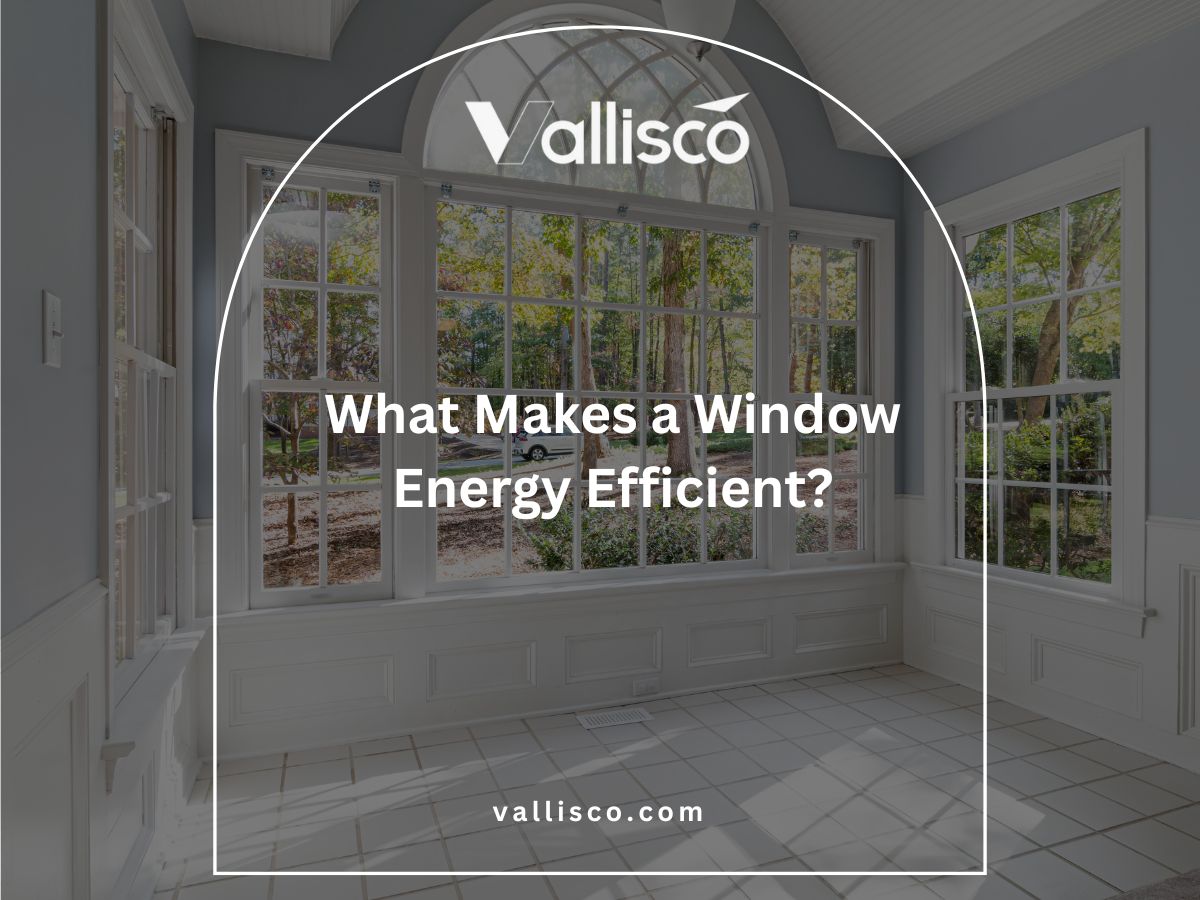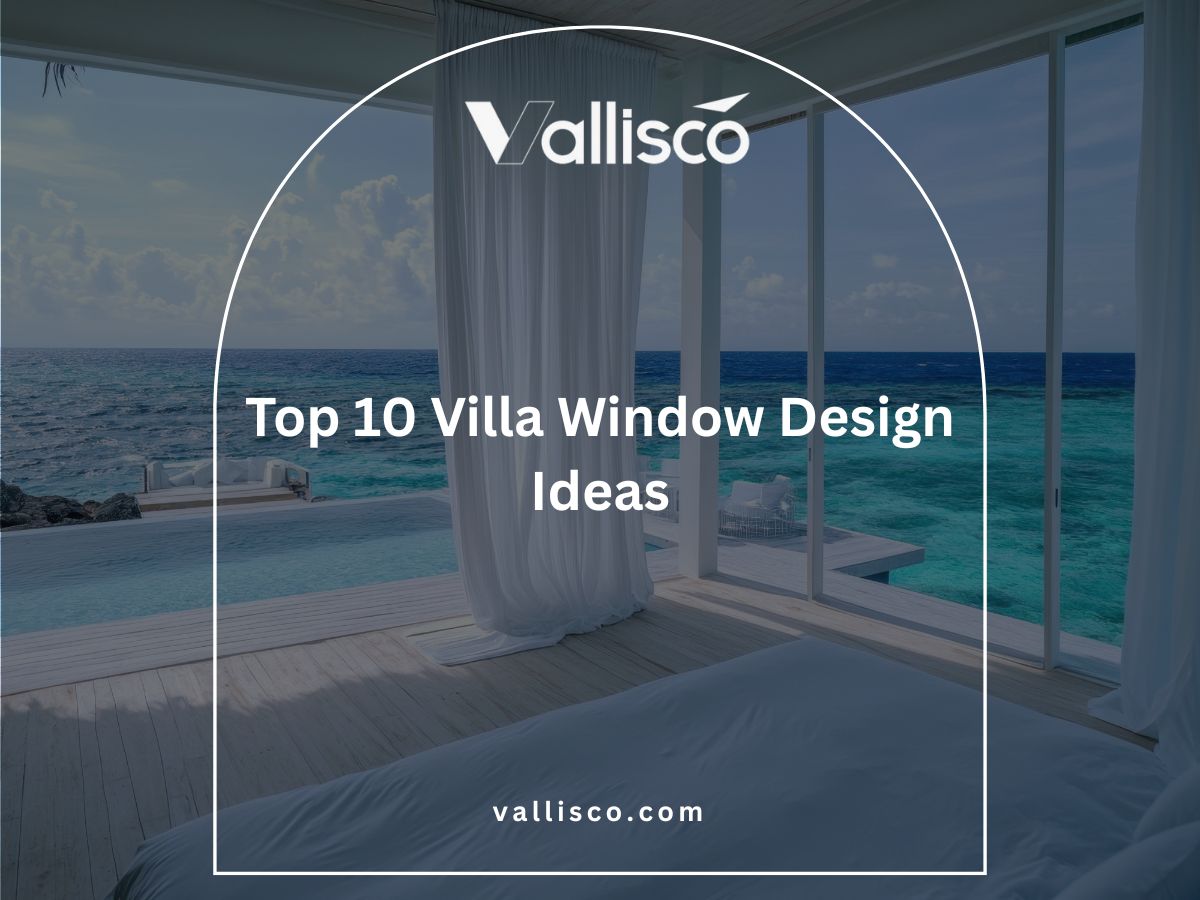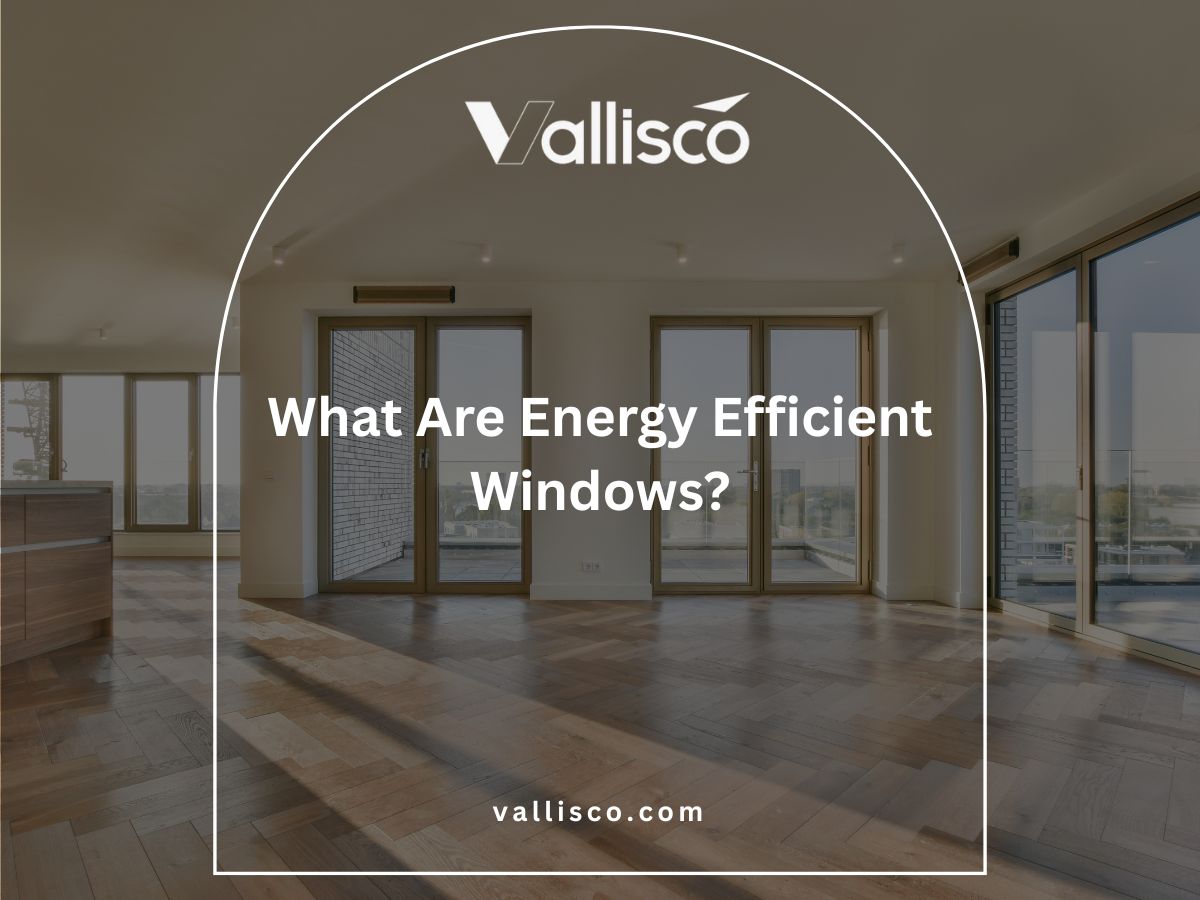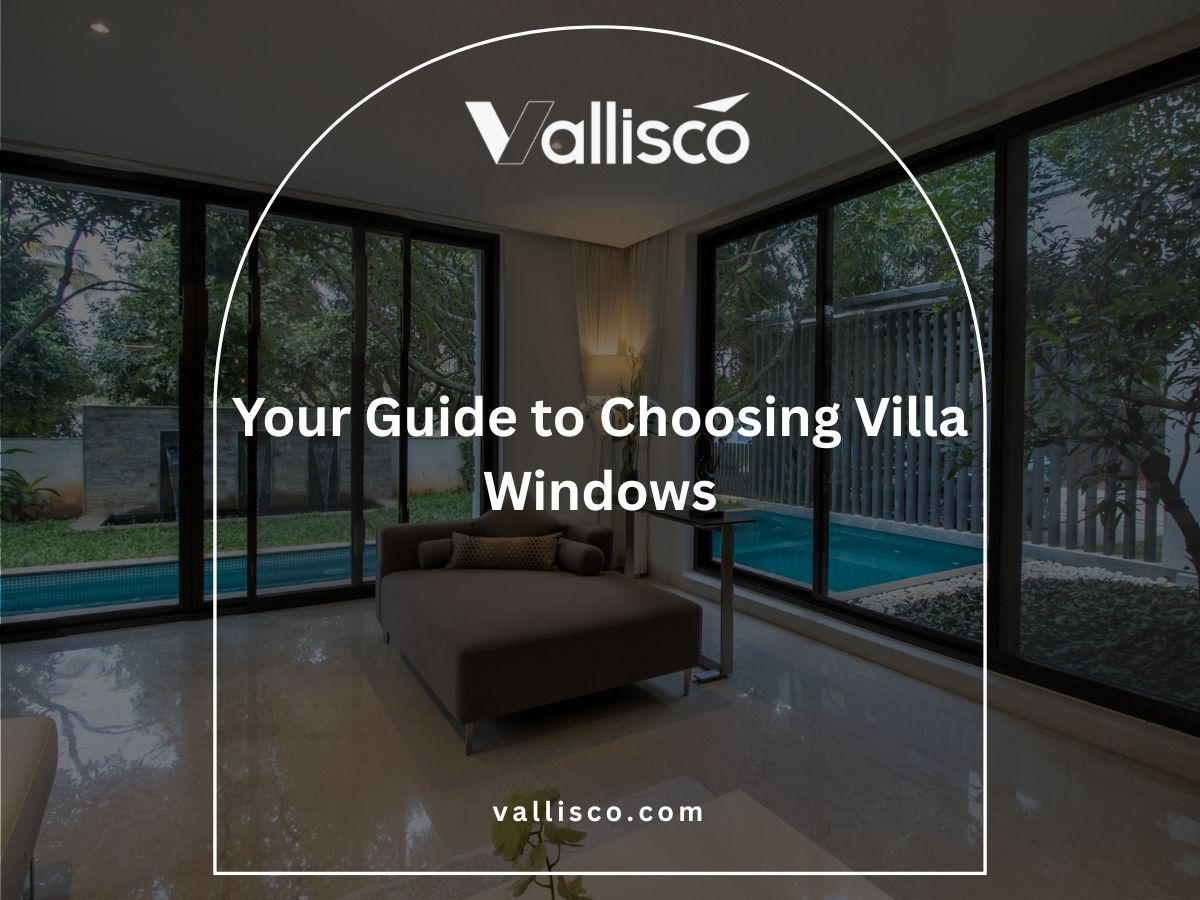Choosing the right door can feel simple until you’re faced with options that look great on paper but fall short in real spaces.
I’ve seen it happen in villas that felt too closed off, hotels where flow was awkward, and even in my own early projects where the wrong door layout made an otherwise beautiful space feel disconnected.
As someone who’s worked with builders, engineers, and property owners across homes and hospitality spaces, I’ve learned that the right door and design ideas aren’t just about looks they’re about how the space works.
If you’re here, you’re probably searching for door ideas that look good but also fit the space. You want choices that feel modern, support better movement, and match the character of your property.
This article shares 9 door and design ideas that I’ve personally seen make a real difference. Whether you’re planning a villa, greenhouse, or guesthouse, you’ll find examples that blend visual impact with everyday function.
By the end, you’ll have the tools you need to get inspired and choose front door designs that improve how your space looks, feels, and lives.
So let’s get down to it!
Quick Comparison Chart
Before we dive deep into each door style, here’s a quick side-by-side comparison. It’ll give you a glimpse of what each one offers so you can start thinking about which door feels right for your space.
| Door Type | Best For | Key Benefits | Things to Watch For |
| Minimalist Flush Doors | Modern interiors, hallways, guest rooms | Seamless look, blends with walls | Needs precise installation |
| Slim Frame Sliding Glass | Patios, sunrooms, open floor plans | Saves space, lets in light, opens wide views | Track quality and safety glass |
| Pivot Entry Doors | Grand entrances, villas, hotels | Statement-making, handles large panels easily | Requires special hardware and space |
| Frameless Glass Doors | Bathrooms, greenhouses, interior zones | Keeps space open, maximizes light flow | Needs frequent cleaning, privacy concerns |
| Smart Doors with Digital Locks | Guest access, modern homes, B&Bs | Keyless entry, access control, convenience | Battery life, weather protection |
| Black Frame Industrial Doors | Urban villas, studios, stylish lounges | Bold design, defines space without blocking light | Custom sizing, glass cleaning |
| Bifold Patio Doors | Garden views, wide openings, cafes | Opens up full walls, connects inside and out | Needs stacking space and smooth tracks |
| Timber & Glass Combination | Warm interiors, entryways, guest rooms | Balanced look, brings in light and texture | Wood sealing and privacy glass choice |
| Thermal Break Aluminum | Harsh climates, greenhouses, energy needs | Insulation, strength, keeps temperature steady | Higher cost, glass quality matters |
Now that you’ve got the big picture, let’s explore each type up close and see which one really fits your space.
1. Minimalist Flush Doors
A flush door is a door with a completely flat surface that sits level with the wall. It doesn’t have panels, trim, or decorative details. The look is clean, and often the door is painted the same color as the wall, so it almost disappears.
Hardware like hinges and handles is usually simple or hidden, making the door feel like part of the architecture rather than a separate feature. This style works best in modern or minimalist interiors, where smooth surfaces and clean lines are important.
Best For
- Open-Concept Villas: Keeps attention on the layout and large spaces rather than breaking the flow with bold door designs.
- Hallways and Service Rooms: Makes narrow or utility areas feel less busy and more unified.
- Minimalist Hotels or B&Bs: Complements rooms that are styled with simplicity and calm in mind.
Why It Works
A few years ago, I worked with a client designing a guesthouse with concrete walls and oak floors. Their first choice framed wooden doors felt too heavy for the space. We switched to flush doors painted like the walls, and the change was instant. The rooms felt bigger, calmer, and guests noticed.
If you want that kind of clarity in your design, flush doors are a smart option. They keep the focus on layout, light, and materials. Vallisco offers clean, modern flush doors that fit seamlessly into both residential and commercial spaces.
Things to Consider
- Precision Installation Required: Any uneven edge or misalignment will be noticeable and ruin the clean finish.
- Use Concealed Hinges: These keep the door flat and uninterrupted visually, which is essential for this style.
- Stick With Matte Paint: Glossy paint can highlight flaws and create glare that breaks the calm feel.
- Avoid In Ornate Interiors: This type of door doesn’t match well with traditional or heavily styled spaces.
If you want something quiet and modern that brings calm to a room, this is a door worth considering. It’s not flashy, but it does its job well and that makes a difference.
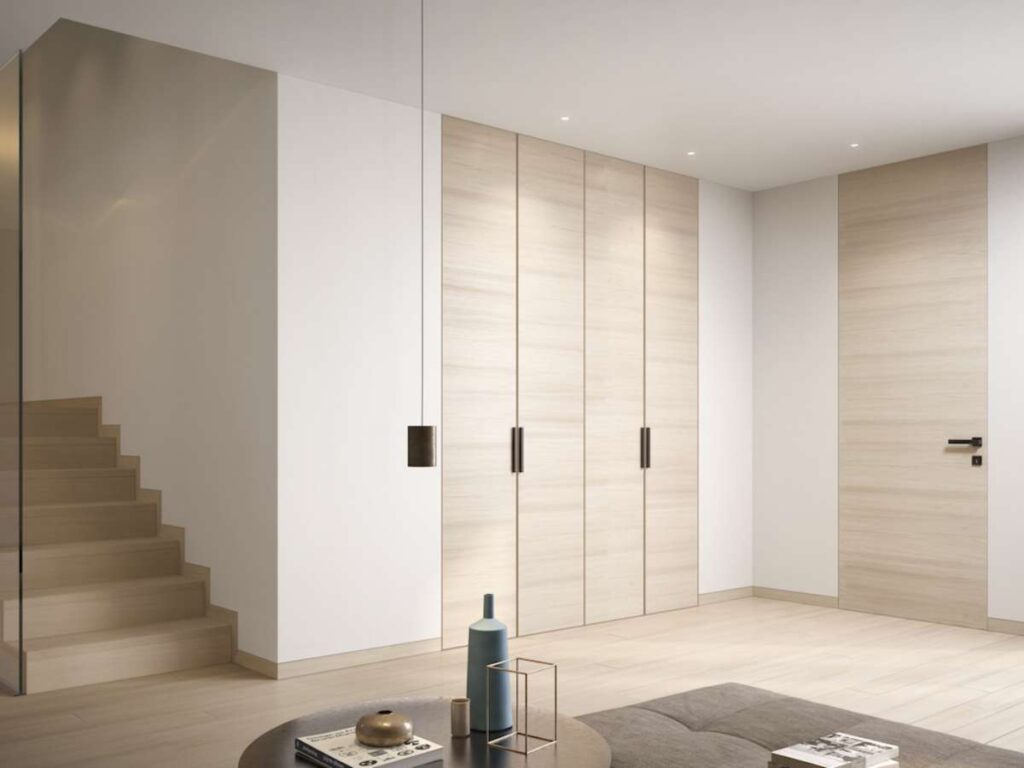
2. Slim Frame Sliding Glass Doors
Slim frame sliding glass doors are large glass panels that glide sideways on a track system. The frames around the glass are very thin, often made of aluminum or steel, so the view stays open and clear. These doors are designed to let in as much light as possible while taking up very little space.
They’re often used in places where you want a strong indoor-outdoor connection, like a living room facing a patio or a greenhouse entry. Because the doors slide instead of swinging, they’re also a great solution in tight areas where you don’t want to block walkways or furniture.
Best For
- Living Rooms With Outdoor Views: Lets in natural light and gives you a full view of your garden or pool.
- Greenhouses and Sun-Filled Areas: Keeps the space warm and bright without the heaviness of traditional doors.
- Boutique Hotels or Guesthouses: Creates a soft and open feel in rooms with balconies or private patios.
Why It Works
During a hotel renovation project a few years ago, we replaced a set of traditional wooden doors with slim frame sliding glass panels in the guest suites. The difference was hard to ignore. The rooms felt brighter, wider, and more relaxing. Guests started asking if the rooms had been expanded, even though we hadn’t moved a single wall.
If you’re designing a space where flow, light, and openness matter, this type of door has a noticeable impact. It also helps in warm climates, where you want to blend inside and outside without dealing with bulky door swings.
Things to Consider
- Install High-Quality Tracks: Poor tracks can make the sliding motion stiff or noisy, especially over time.
- Use Tempered or Laminated Glass: These safety options are stronger and safer, especially in windy or high-traffic areas.
- Clean Frames and Glass Regularly: The slim profile means fingerprints and dust are easier to see.
- Check Drainage Around the Frame: Sliding doors near patios or gardens need good water control during rain.
If your space has a view worth enjoying, or you simply want to feel more connected to the outdoors, slim sliding doors are a smart, stylish choice.
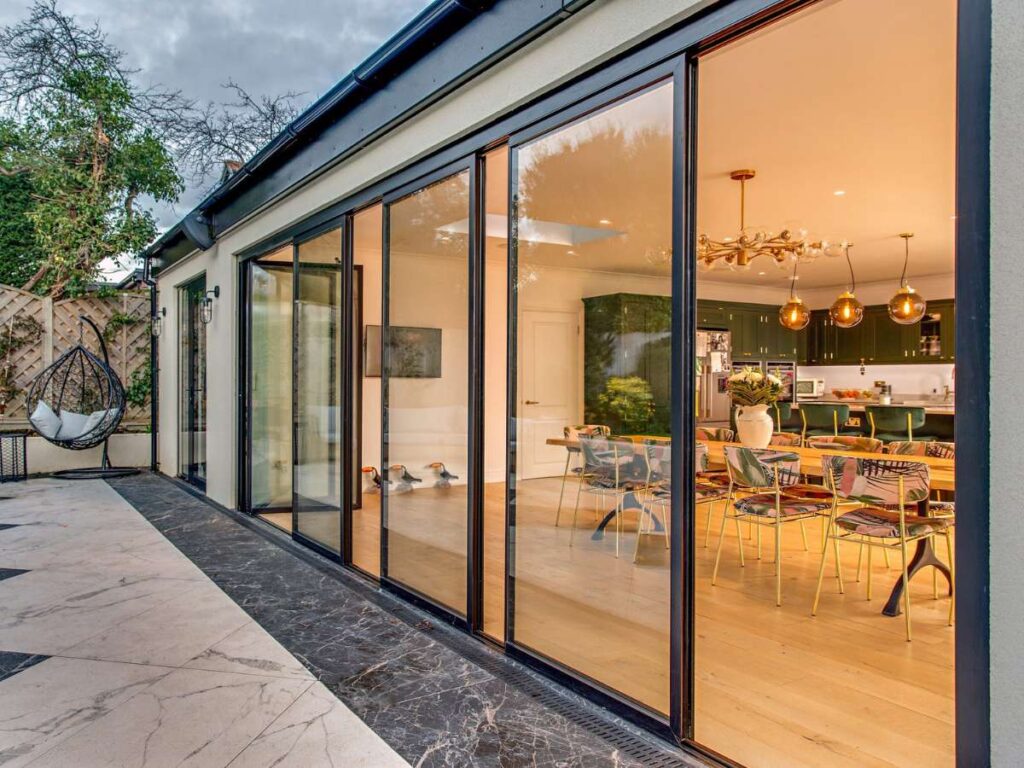
3. Pivot Entry Doors
A pivot door is a type of door that rotates on a central pin or pivot point, instead of swinging on side hinges like a traditional door. This pivot point is usually set a few inches or more from the edge, which lets the door open in a smooth, balanced motion. The result is a door that feels different right away, larger, more stable, and visually bold.
These doors often come in oversized dimensions and heavier materials, like solid wood, steel, or glass. Because the weight is distributed through the center pivot, it stays easy to open even when the door is taller or wider than average.
Best For
- Main Entrances for Villas or Modern Homes: Makes a strong first impression and complements wide or tall facades.
- Hotel or Guesthouse Lobbies: Adds presence and drama to the entrance while staying functional.
- Design-Forward Projects: Great choice for properties that focus on architecture and materials.
Why It Works
I still remember a hotel entrance I worked on where nothing felt right at first. We had a tall stone facade, but every regular door looked too small or too plain. Switching to a pivot door made everything click. The weight of the door gave it a presence that matched the building, and the way it opened felt surprisingly smooth. Guests actually paused to take it in. It’s one of those details people notice without even realizing it.
If you’re working on a space where the entryway needs to carry visual weight or where you want something that feels custom without extra flash a pivot door is worth thinking about.
Things to Consider
- Needs Proper Hardware: You’ll need a quality pivot system installed in the floor and ceiling to handle the door’s size and weight.
- Works Best With Space: Because the door swings in and out slightly, make sure there’s room on both sides of the entry.
- Choose the Right Materials: Heavy wood, metal, or composite panels often look best and feel sturdy during use.
- Plan for Custom Installation: These aren’t off-the-shelf doors, so give your builder or installer time to get it right.
A pivot door doesn’t just open a space it introduces it. If your entry needs to stand out while staying grounded, this could be the design feature you’re looking for.
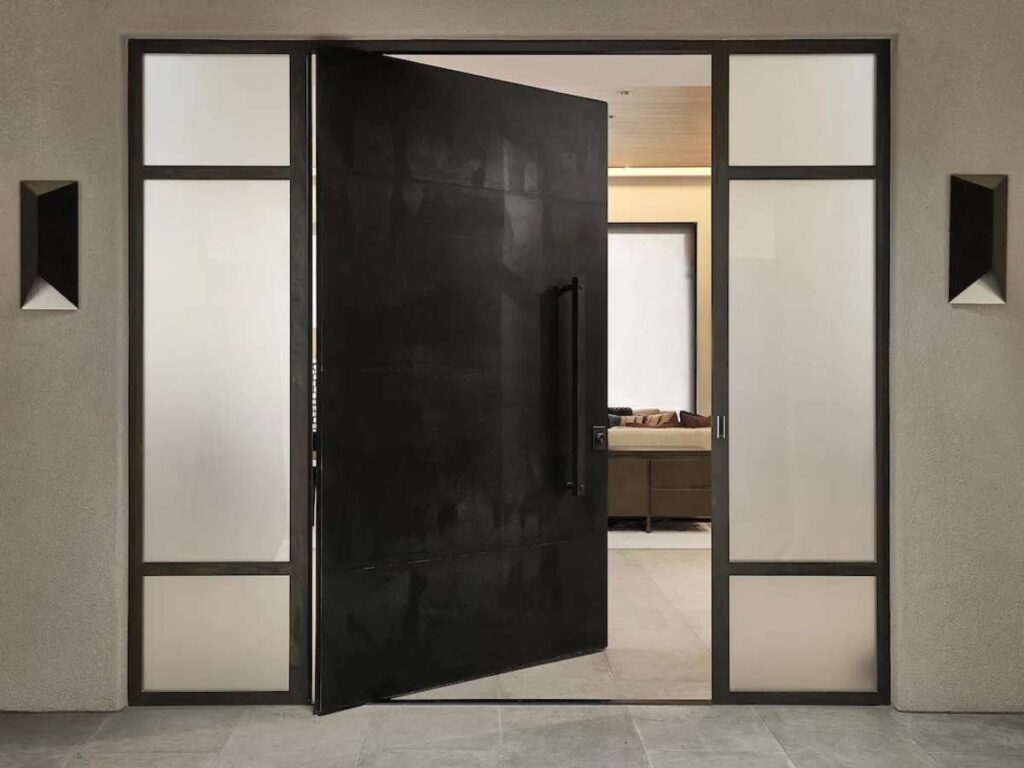
4. Frameless Glass Doors
A frameless glass door is made of thick, tempered glass with no visible outer frame around the edges. Instead of being set into a wooden or metal border, the glass itself forms the entire body of the door. Hinges, locks, and handles are attached directly to the glass, giving it a clean, floating look.
These doors are commonly used indoors, especially in spaces where you want openness and light. You’ll often see them in bathrooms, offices, or even sunrooms. With the right type of glass and hardware, they can also work in some outdoor setups, especially for greenhouses or enclosed patios.
Best For
- Bathrooms or Spa Areas: Keeps light moving through the space while keeping water contained.
- Greenhouses and Indoor Gardens: Creates separation without blocking sunlight or airflow.
- Modern Offices or Meeting Rooms in Boutique Hotels: Makes the space feel open and polished without bulky frames.
Why It Works
I once helped renovate a guest bathroom in a small mountain inn. The layout was tight, and a regular door made it feel even smaller. We installed a frameless glass door between the shower area and the rest of the room, and the change was immediate. The space felt brighter, more open, and easier to move around in. Guests often commented on how “quiet” the design felt, even though it used almost no extra material.
If you’re trying to make a space feel larger, lighter, or more modern, a frameless glass door can do a lot with very little.
Things to Consider
- Use Tempered or Laminated Glass: These types of glass are stronger and safer if broken.
- Choose the Right Hardware: Floor closers, top pivots, or patch fittings are often used instead of traditional hinges.
- Watch for Fingerprints: Frameless glass needs regular cleaning to stay clear, especially in high-touch areas.
- Consider Privacy Options: Frosted, tinted, or fluted glass can help if full visibility isn’t ideal.
Frameless glass doors are simple, but they change how space feels. They work best when you want to keep things open, both visually and physically, without adding bulk or blocking the view.
5. Smart Doors with Digital Locks
A smart door is a regular door that includes electronic features, most commonly a digital lock. These locks can be opened using a code, fingerprint, key card, smartphone, or even facial recognition. Instead of using a physical key, you use a secure access method that connects to a small system built into the door.
These doors are often installed in places that need better access control, like hotel rooms, gated villas, or short-stay rentals. They also work well in private homes where convenience and safety are important. Some systems can be connected to mobile apps, giving you the ability to lock or unlock your door remotely.
Best For
- Short-Term Rentals or Hotels: Guests can check in and out without needing keys or physical contact.
- Modern Villas and Private Homes: Offers peace of mind by tracking who comes and goes.
- B&Bs and Guest Suites: Makes it easy to manage multiple guests with different codes or access times.
Why It Works
I worked with a couple building a small guesthouse near a tourist trail. They wanted something secure but simple for their guests, who often arrived late or during rainy evenings. We added smart locks to each guest room, and they never had to worry about lost keys again. The guests appreciated being able to use their phones or a code instead of waiting at the front desk.
Smart doors aren’t just about convenience. They solve real problems, especially if you’re managing properties from afar or need a system that adjusts quickly for different users.
Things to Consider
- Check Battery Life: Most digital locks run on batteries and will need replacement after several months.
- Add a Backup Option: Some models include mechanical keyholes or emergency power contacts in case of failure.
- Match the Design: Choose a door and lock style that fits your property’s look and materials.
- Protect from Weather: For outdoor use, select locks that are rated for rain, heat, or cold.
If you’re ready to move beyond keys and into something more flexible, smart doors with digital locks can make daily life smoother for you and your guests.
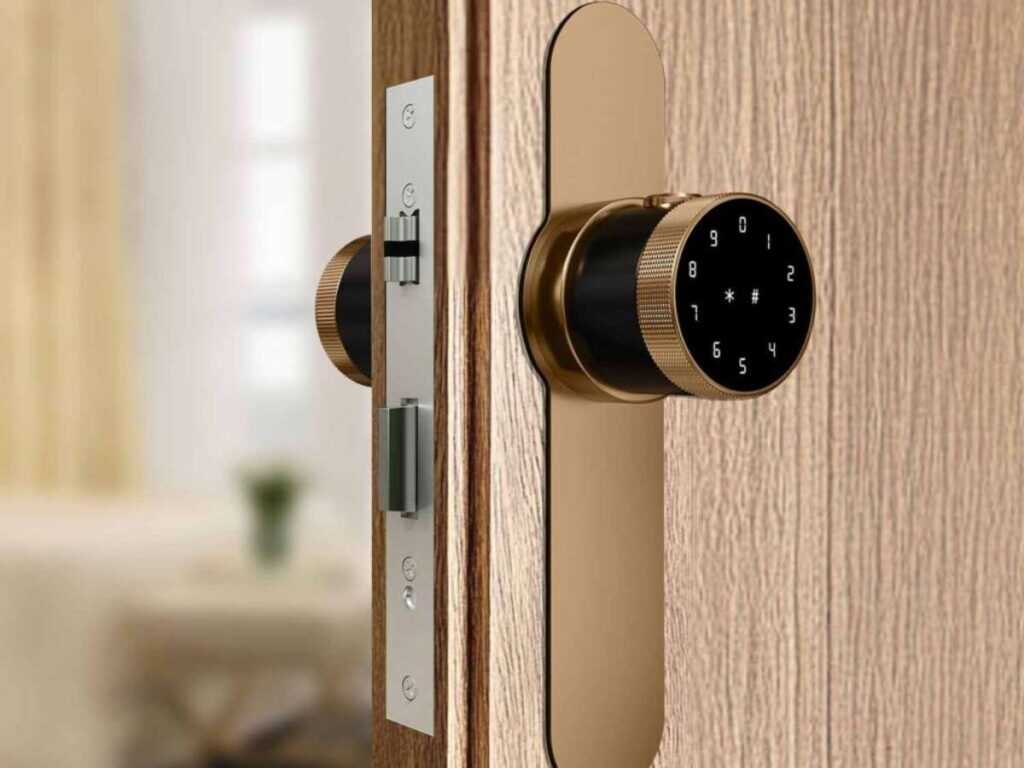
6. Black Frame Industrial Doors
A black frame industrial door is a door made from large glass panels supported by slim, black metal grids. The style is inspired by factories and warehouses, where steel windows and doors were used for both strength and function. Today, it’s become a popular choice in modern interiors for its bold, clean lines and ability to divide space without blocking light.
These doors are usually made from powder-coated aluminum or steel, paired with clear or textured glass. They can be used as swing doors, sliding doors, or even fixed glass panels that give a room structure while keeping it open.
Best For
- Urban Villas or Renovated Spaces: Add contrast and structure to open layouts without making them feel closed.
- Loft-Style Hotels or Studios: Matches exposed brick, steel beams, or raw wood with ease.
- Private Offices or Lounge Areas: Divides rooms while letting light pass through and keeping a modern look.
Why It Works
A friend of mine converted an old shipping office into a guesthouse. The inside had lots of raw concrete and wooden furniture, but the rooms still felt flat. We decided to install black frame industrial doors to split the kitchen from the dining area. That single choice brought depth and style to space. It added just enough structure without making things feel boxed in.
If you want something that feels strong but not heavy, or something modern but still with personality, this type of door offers both.
Things to Consider
- Keep the Glass Clean: Large glass sections show fingerprints and smudges, especially with light shining through.
- Custom Sizing May Be Needed: These doors often need to be built to match your layout exactly.
- Choose the Right Glass Type: Clear glass keeps things bright, but fluted or frosted options offer more privacy.
- Coordinate with Other Finishes: These doors work best when paired with black lighting, fixtures, or hardware in the same tone.
Black frame industrial doors help define spaces in a way that feels sharp, open, and intentional. If you’re after a style that looks modern without being cold, this design might be the right fit.

7. Bifold Patio Doors
Bifold patio doors are made of multiple glass panels that fold and slide along a track, stacking neatly to one or both sides. Unlike sliding doors that move behind one another, bifold doors open up the entire width of the doorway. This creates a wide, open connection between your indoor space and the outdoors.
The panels are connected by hinges and glide smoothly on top and bottom tracks. They’re often made of aluminum or timber frames with large glass inserts, and you can choose how many panels you want depending on the width of your opening.
Best For
- Living Rooms That Face a Garden or Pool: Opens up the wall to let in light, air, and a great view.
- Restaurants or Lounges in Inns and Hotels: Makes it easy to expand indoor seating into an outdoor space.
- Greenhouses or Sun-Filled Rooms: Creates full access to sunlight and breeze when opened.
Why It Works
I worked on a small hotel near the coast where the dining area always felt cramped. The view outside was beautiful, but the space didn’t take advantage of it. We added bifold patio doors along the entire back wall, and everything changed. During breakfast hours, the staff opened all the panels, and suddenly the dining room felt twice as big. Guests loved the fresh air, and the space became more flexible for events too.
If you want to break down the barrier between indoor and outdoor space, bifold doors are one of the most effective ways to do it. They offer full access and a clean, modern look at the same time.
Things to Consider
- Track Quality Matters: Choose a system that’s durable and easy to operate, especially with more panels.
- Think About Weather Sealing: Make sure the door system keeps out wind and rain when closed.
- Leave Room for Stacking: You’ll need space on one or both sides for the folded panels to rest.
- Use Double or Triple Glazing: This helps with insulation and keeps the interior comfortable.
If you’re building a space meant for both comfort and connection to nature, bifold patio doors are a solid, beautiful choice that will pay off every time you open them.
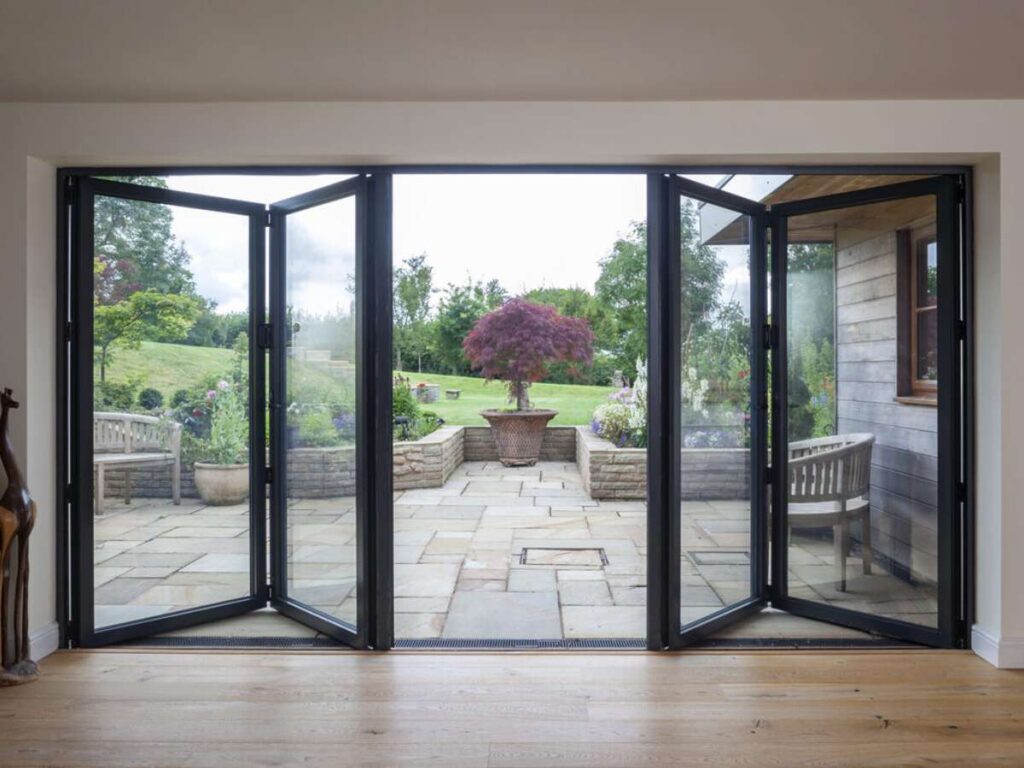
8. Timber & Glass Combination Doors
Timber and glass combination doors are made using a solid wood frame with glass inserts placed in the center or across the panels. The wood adds warmth and texture, while the glass allows natural light to pass through. These doors can be designed in many styles, from clean and modern to more traditional looks.
Some versions use clear glass, while others use frosted or textured options for more privacy. Depending on your needs, the glass portion can be small and decorative or large enough to brighten the entire space. This flexibility is what makes this type of door so versatile.
Best For
- Home Entryways and Hallways: Brings in light while still offering some privacy.
- Guest Rooms in Inns or Villas: Creates a cozy, welcoming feel with natural finishes.
- Studies, Offices, or Dining Rooms: Helps keep a space enclosed without feeling boxed in.
Why It Works
I remember visiting a house with a narrow hallway and no windows nearby. The owner had installed solid wood doors, which made the space feel closed and dim. Later, we replaced them with timber and glass doors same layout, same floor but suddenly everything felt different. Light passed through, and the wood made the home feel warm and grounded. You could tell the space was being used, not just filled.
If you’ve been debating between the clean look of glass and the warmth of wood, you don’t have to choose. This design gives you both.
Things to Consider
- Choose the Right Wood Finish: Oak, walnut, or ash each give a different tone, so think about what matches your flooring and walls.
- Mind the Privacy Level: Use frosted or fluted glass if the door faces a bathroom, bedroom, or private area.
- Watch for Warping in Humid Areas: Proper sealing helps protect wood from changes in temperature and moisture.
- Match Hardware to the Look: Use handles and hinges in similar tones to keep the style consistent.
If you’re looking for a design that feels warm, lets in light, and still fits a wide range of spaces, timber and glass doors are worth serious thought. They bring a nice balance between beauty and function.
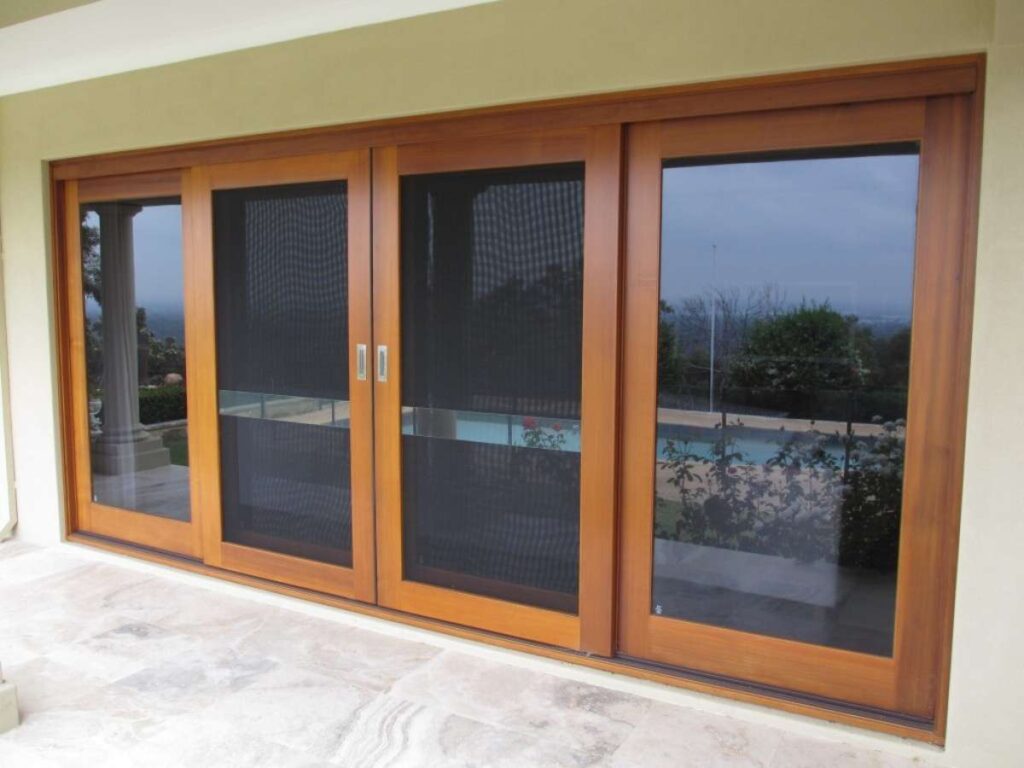
9. Thermal Break Aluminum Doors
Thermal break aluminum doors are made with a special type of aluminum frame that includes a non-metal material between the inside and outside layers. This “break” in the metal stops heat from passing through the frame too quickly. It helps keep warm air inside during cold months and blocks outside heat during hot weather.
These doors are often used with large glass panels, making them a smart choice for spaces that need both insulation and natural light. They’re popular in homes, greenhouses, and hospitality buildings where energy use and comfort matter.
Best For
- Modern Homes in Hot or Cold Climates: Helps control indoor temperatures more effectively.
- Greenhouses or Sunrooms: Keeps warm or cool air from escaping while letting in sunlight.
- Energy-Efficient Hotels or Guesthouses: Supports lower heating and cooling costs across guest spaces.
Why It Works
One project that really showed me the value of thermal break doors was a vacation villa built in a region with hot summers and chilly winters. The original doors let too much heat escape in winter and made the air conditioners work harder in summer. After switching to thermal break aluminum doors, the difference was obvious. The rooms stayed more comfortable throughout the year, and guests even mentioned how quiet and calm the space felt.
If you’re building in an area with big temperature swings, or if you care about long-term comfort and savings, this door style is worth considering.
Things to Consider
- Higher Cost Than Standard Aluminum: The added insulation layer makes these more expensive upfront, but they save energy over time.
- Pick the Right Glass: Double or triple glazing will help the door perform at its best.
- Use Powder-Coated Frames: These finishes help protect aluminum and reduce wear in harsh climates.
- Check for Compatible Hardware: Because of the layered frame, some locksets or handles may need adjustments.
Thermal break aluminum doors aren’t just about saving energy they also help make your space quieter, more stable, and more comfortable to live in day after day.
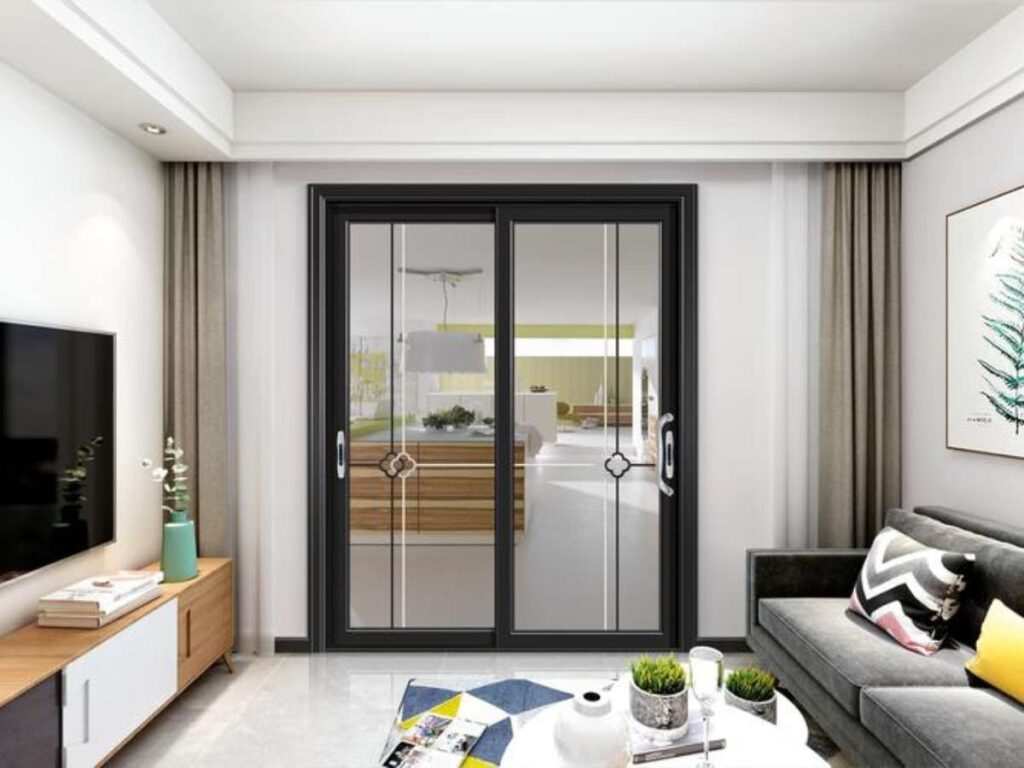
How to Choose the Right Door and Design Ideas for a Modern Project
Choosing the right door isn’t just about looks. It’s about how the door fits your space, your daily habits, and the feeling you want to create. I’ve worked on enough projects to know that one small design choice can make or break how a space works.
So if you’re unsure where to start, here are a few simple ways to narrow it down.
- Think About Use First: Ask what the door actually needs to do, add privacy, let in light, or open up space. A guest bathroom and a greenhouse need very different things.
- Match the Mood: Some doors feel warm and natural, others clean and bold. Shape and material affect how the room feels day to day.
- Let in the Light: A door can block or spread sunlight depending on the design. Glass, sliding, or framed options keep rooms feeling open and bright.
- Plan for Comfort: If your area gets hot or cold, your door affects how stable the space stays. Look into options like thermal break aluminum if comfort and energy savings matter.
- Balance Budget and Upkeep: Some doors look great but need more maintenance. Go with something that fits both your lifestyle and what you’re ready to care for over time.
If you’re looking for support choosing the right door for your project, Vallisco can help. They manufacture doors and windows for homes, villas, hotels, and more with options that match both your space and your budget.
Conclusion
Modern design isn’t just about what you see it’s also about how you feel in the space. From flush doors to sliding glass, each idea in this guide gives you a different way to shape that experience. Think about your space, your climate, and your day-to-day flow. Then go back through the list and find what speaks to you.
You’ve got options now. Use them to build a space that works better, not just looks better.
The right door can change everything.
Ready to take the next step? Contact Vallisco today!
Explore Related Resources
If you enjoyed this read, here are a few more articles packed with helpful information:
Front & Home Door Designs:
- Door Manufacturing: A Step-by-Step Guide
- Top 8 Designs for Front Door
- 9 Bathroom Door Designs Ideas
- Top 8 Sliding Patio Door Design Ideas
Hotel Doors & Windows:
Villa Doors & Windows:
- 10 Types of Villa Door Designs
- Top 10 Villa Window Design Ideas
- 4 Best Bay Window Ideas for Kitchen Spaces
Still haven’t found what you’re looking for? Don’t hesitate to contact us. We’re available around the clock to assist you.


